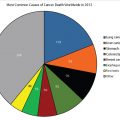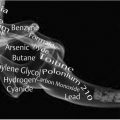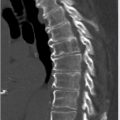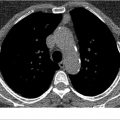8 Elements of a Successful Lung Cancer–Screening Program
Summary
This chapter succinctly describes those key elements that must be implemented for lung cancer–screening programs of any size and volume to be successful and impact the care of potential screenees. Key components including but not limited to eligibility criteria, education of screenees, providers, radiologists, appropriate computed tomography (CT) image acquisition and interpretation, radiation dose, reporting, and communication of pertinent findings are discussed. The currently approved billing codes for reimbursement purposes are also provided. This chapter also provides an in-depth discussion on smoking cessation counseling techniques including behavioral modification, motivational interviewing, change talk, nicotine replacement therapy with patches, lozenges, and nasal sprays as well as currently approved medications that may be used to help smokers quit smoking.
Keywords: best practice parameters, eligibility, multidisciplinary team, navigator-coordinator, self-referral, reimbursement, shared decision making, CTDIvol, DLP, American Association of Physicists in Medicine, computer-assisted detection, volumetric nodule analysis, Dutch–Belgian Randomized Lung Cancer Screening Trial, CMS registry, quality control, smoking cessation counseling, ACR designation, Patient Protection and Affordable Care Act, CPT codes, G-codes, ICD-10 diagnosis codes, nicotine replacement therapy, bupropion, varenicline
8.1 Introduction
In order to be truly successful and positively impact the lives of millions of high-risk persons, today’s lung cancer–screening (LCS) programs must provide a level of care and continuity in care similar to that of the original 33 medical centers participating in the National Lung Screening Trial (NLST). Best practice parameters have been developed by the American College of Radiology (ACR) in collaboration with the Society of Thoracic Radiology (STR) to assist medical facilities in meeting these goals and expectations. Radiologists actively involved or participating in LCS programs are encouraged to read, follow, and apply these best practice parameters. Similarly, the American College of Chest Physicians (ACCP) and the American Thoracic Society (ATS) released policy statements addressing the same that are also available for review. Additionally, Fintelmann et al published a key article in 2015 in which the authors discussed what they referred to as the “10 pillars of successful LCS.” Programs or practices involved in LCS for the early detection of lung cancer are also encouraged to read and apply the concepts outlined in the Fintelmann et al article.
8.2 Key Components to Making Your LCS Program Work
The following section addresses some key components we found important at our institution for the initial establishment, subsequent growth, and eventual success of our early detection LCS program. Programs contemplating the development or further growth of an LCS program need to realize the importance of not only reaching out to their neighboring community of potential eligible screenees, but also establishing a firm cohesive relationship with their primary health care providers and referrals. It is also important to have a close working relationship with a multidisciplinary team of specialists and subspecialists, either within your own institution or in close proximity to it, highly invested in the early detection, management, and treatment of not only early-stage lung cancer, but also other “lung health” issues. LCS programs also require the full support from radiology administrators, chairpersons, and the hospital administration in order to succeed. We will now briefly address some key components that were helpful in our LCS program and hopefully will likewise be helpful in setting up your own program.
8.2.1 Screenee Eligibility
Screening only those eligible at-risk persons is paramount. The current eligibility requirements for LCS mandated for reimbursement purposes by the Centers for Medicare & Medicaid Services (CMS) were briefly addressed in Chapter 4. Once again, CMS approves low-dose computed tomography (LDCT) LCS for asymptomatic Medicare beneficiaries aged 55 to 77 years with a history of heavy tobacco abuse. Heavy tobacco abuse is defined as current smokers with a 30-pack-year history of abuse or the equivalent thereof or former smokers with an equivalent smoking history having quit within the past 15 years. CMS does restrict the age of eligible Medicare persons to 55 to 77 years as opposed to 80 years recommended by the U.S. Preventive Services Task Forces (USPSTF). Most private third-party payers now follow either the CMS or USPSTF eligibility requirements for reimbursement. It should be noted that other medical societies have proposed similar but different LCS eligibility criteria. For example, the ACCP, American Society of Clinical Oncology (ASCO), ATS, American Cancer Society (ACS), and the American Lung Association (ALA) all endorse screening for asymptomatic former and current smokers aged 55 to 74 years, similar to the original NLST participants. Although National Comprehensive Cancer Network (NCCN) stratifies their eligibility requirements to asymptomatic smokers 55 to 74 years with the same pack-year history of abuse, it also considers younger current or formers smokers ≥ 50-years of age, with less of a tobacco abuse history, namely 20 pack-years, who also have additional risk factors, such a personal history of emphysema or pulmonary fibrosis, personal history of various cancers or occupational exposure to known carcinogens (e.g., asbestos, radon), or a family history of lung cancer (NCCN 2 criteria). Our institution currently follows both the USPSTF and CMS eligibility guidelines but also considers the latter NCCN 2 criteria in certain circumstances. However, programs should realize that at this time, NCCN 2 eligibility criteria are not typically reimbursable.
8.2.2 Screenee, Provider, and Radiologist Education
Appropriate education regarding the rationale and logistics of LCS is a key element to the success of any LCS program. Education involves not only the individual undergoing screening, but also the radiologists, primary care providers, and hospital administrators and leadership. The shared decision making (SMD) process (Chapter 4) is specifically designed and developed to educate the individual contemplating screening. The shared decision making process should be supplemented by written or virtual visual aids or pamphlets that contain similar information to that presented in the SMD described in layman terms. Radiologists must be well trained in the acquisition and interpretation of high-quality low-dose chest exams, the use and application of the nodule lexicon or nomenclature, and reporting screen results by application of the Lung CT Screening Reporting and Data System (Lung-RADS). Primary care-providers may receive education about LCS through one-on-one conversations, group meetings, conferences, grand rounds, newsletters, and online materials. Every LCS program should maintain an updated Web page that includes frequently asked questions (FAQs) for prospective individuals contemplating screening and providers as well as direct links to educational material provided by the ACR (https://www.acr.org/Quality-Safety/Resources/Lung-Imaging-Resources), Lung Cancer Alliance (ww.lungcanceralliance.org/am-i-at-risk/), NCCN (https://www.nccn.org/patients/guidelines/lung_screening/), and/or the ACS (https://www.cancer.org/latest-news/who-should-be-screened-for-lung-cancer.html). It is also helpful to differentiate those persons who may be eligible for LCS but may not be candidates for such using a potential risk calculator. A direct link to http://www.shouldiscreen.com is a very helpful resource for both primary care providers and individuals to assist them in this personal process. It is also essential that hospital administrators and leaders ensure the allocation of space and time, and clerical, nursing, physician staffing as well as financial resources needed to sustain and grow the LCS program. Even low-volume LCS programs will need the monetary funds to hire and train qualified support staff, purchase state-of-the-art equipment, information technology, and patient tracking software. With increasing screening volume and follow-up screens and studies, the need for additional CT technologists and CT scanners, radiologists (possibly with thoracic imaging training or interventional skills), pulmonologists, and thoracic surgeons must also be both anticipated and supported.
LCS is not something to be taken lightly. It is not an exam or procedure. LCS is a “process” that involves a “team.” It is imperative that all members of this multidisciplinary team, including the individual being screened, understand that this is not a “one time and your done screen” but rather a “long-term process.” In particular, it is a “process” that most likely will go on for decades for most screened individuals, their primary care providers, the radiologists, and the screening center. The LCS multidisciplinary team must be well educated in lung health and the many nuances of lung disease, including diseases that may mimic lung cancer, and in the diagnosis and management of screen-detected lung cancer. Central to every LCS program team are the coordinator and navigator(s) who interact with each and every facet of the program (▶ Fig. 8.1). This includes interfacing with the referring primary care services, securing preauthorization for reimbursement purposes, CT schedulers, insurers, CMS, determining screening eligibility or pursuing a diagnostic exam in appropriate cases, relaying and following up on screen results to the referral service and/or screened individual, orchestrating appropriate annual or shorter term interval follow-up exams and/or intervention if needed, offering and/or ensuring smoking cessation counseling is provided, and uploading data into the mandatory CMS registry. The LCS program coordinator and navigators may be a midlevel provider (e.g., physician assistant [PA] or nurse practitioner [NP]) working under the supervision of a physician in the department of radiology, medicine, or surgery. An LCS program cannot and will not succeed without heavily invested and competent program coordinators and patient navigators.

8.2.3 LDCT Screening Ordering Process and Self-Referrals
Only a physician or a qualified nonphysician practitioner (e.g., PA, NP, or clinical nurse specialist [CNS]) can submit an order for LDCT LCS as mandated by CMS. The order and screening exam can only be performed “after” provided documentation that the individual meets the eligibility requirements and that both parties participated in the shared decision making process. Radiology departments can ensure compliance of this process by integrating this documentation process into the interface of their specific computerized order entry systems. It should be acknowledged that both the ACR and STR practice parameters provide provisions allowing medical centers to accept self-referrals for LCS with LDCT at the discretion of the facility director. However, facilities accepting self-referrals are required to have mechanisms in place to refer these particular persons to qualified health care providers to address and manage abnormal screen results. Additionally, self-referrals are not reimbursable by CMS.
8.3 Acquiring the LDCT Screen Images
The ACR-STR has developed basic imaging requirements and parameters for LCS with LCDT that imaging centers and radiologists must follow. These practice parameters include the following:
Minimum 16-detector CT scanner.
Unenhanced helical technique performed at full inspiration.
Z-axis should cover the lung apices through the costophrenic angles.
Slice thickness ≤ 2.5 mm (1 mm preferred).
Gantry rotation ≥ 500 ms per rotation.
Radiation dose should be “as low as reasonably achievable” without compromising diagnostic quality. Maximum threshold dose CTDIvol: 3 mGy for a standard-sized patient (5.7 feet [170 cm]; weight, 155 lb [69.75 kg]) employing “appropriate dose reduction” for smaller persons and “appropriate dose increases” for larger persons. For a typical scan length of 35 cm, the dose length product or DLP (CTDIvol: × scan length) is about 105 mGy/cm (note: at our institution, we routinely report the screened individual’s height, weight, BMI [body mass index], and the CTDIvol and DLP in the report; ▶ Fig. 6.4).
Maximum intensity projection (MIP) images may be used to facilitate nodule detection.
The American Association of Physicists in Medicine provides sample low-dose imaging protocols for most major CT vendors that may be accessed online at http://www.aapm.org/pubs/CTProtocols/documents/LungCancerScreeningCT.pdf.
8.3.1 LDCT Screen Image Interpretation
CMS stipulates that only those physicians with documented training in diagnostic radiology and radiation safety can interpret LDCT LCS examinations and claim reimbursement for such. The interpreting physician must be either board certified or board eligible by the American Board of Radiology (ABR) or an equivalent organization. Additional criteria the interpreting physician must satisfy include their participation in continuing medical education (CME) in accordance with ACR standards and personal involvement in the supervision or interpretation of at least 300 chest CTs in the preceding 3 years. All acquired LCS CT images should be reviewed and interpreted on an acceptable picture archiving and communication system (PACS) workstation. MIP as well as multiplanar reconstruction (MPR) images can be used to facilitate nodule detection. Approved computer-assisted detection (CAD) software can be employed as needed as a second but not as a primary reader. The standard is to report lung nodules detected on contiguous axial images (lung windows) using the previously described nodule lexicon (▶ Table 6.1) and measuring techniques described earlier (▶ Fig. 6.1; ▶ Fig. 6.2). However, detected lesions may be reported on any imaging plane that best depicts the dimensions and morphologic features of the nodule of concern. If volumetric software is available, such can be used to assess the percentage of nodule growth (or decrease) and potentially nodule doubling times where appropriate. As previously discussed in Chapter 6 and as reported in the Dutch–Belgian Randomized Lung Cancer Screening Trial (NELSON), a volume increase of at least 25% after at least 3 months is a reliable indicator of interval growth. On both interim and annual follow-up screens, the radiologist should always analyze all previously described or reported antecedent nodules for interval changes in size, shape, attenuation, or dimensions as well as report the presence of new nodules or unexpected incidental findings that might otherwise impact the individual care and management (Chapter 7).
Stay updated, free articles. Join our Telegram channel

Full access? Get Clinical Tree








